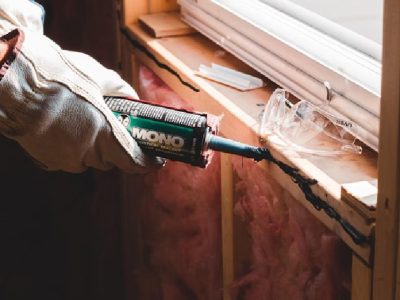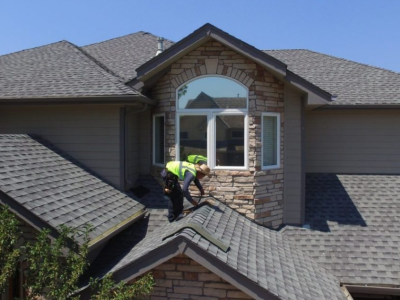Health Hazards of Asbestos Exposure
Power washing asbestos-containing homes is a risky endeavor. Asbestos fibers, when disturbed, can become airborne and pose serious health risks. These fibers are tiny and can be inhaled easily, leading to severe conditions such as asbestosis, lung cancer, and mesothelioma. It’s crucial to understand that even a small amount of exposure can be hazardous. Here are some of the diseases linked to asbestos exposure:
- Mesothelioma: A rare cancer affecting the lining of the lungs or abdomen.
- Lung Cancer: Increased risk due to inhalation of asbestos fibers.
- Asbestosis: Chronic lung condition caused by inhaling asbestos fibers.
Legal Implications of Asbestos Disturbance
Disturbing asbestos in any form, including through power washing, can have significant legal ramifications. Many regions have stringent regulations governing the handling and removal of asbestos. Homeowners could face hefty fines if they violate these rules. Moreover, if the asbestos disturbance leads to health issues for neighbors or workers, legal liabilities could arise. It’s essential to consult local laws and possibly engage professional services to manage asbestos safely.
Environmental Impact of Asbestos Release
The release of asbestos fibers into the environment is not just a health issue but also an environmental concern. Asbestos fibers can contaminate the soil and water, posing long-term risks to the ecosystem. The fibers can remain in the environment for years, affecting wildlife and plant life. It’s important to consider the broader impact of asbestos disturbance, beyond immediate human health risks.
Why Asbestos Was Used in Home Construction
Historical Use of Asbestos in Building Materials
Asbestos has been a staple in construction due to its unique properties. During the 20th century, it was commonly used in various building materials such as roofing shingles, wallboards, and insulation. Its fire-resistant nature made it an ideal choice for enhancing the safety of homes. Asbestos was not just popular; it was a cornerstone of building practices for decades. From the 1920s to the 1970s, it was widely utilized across the United States, reflecting its importance in the industry.
Properties That Made Asbestos Popular
The popularity of asbestos in home construction can be attributed to several key properties:
- Fire Resistance: Asbestos fibers can withstand high temperatures, making them ideal for fireproofing materials.
- Durability: Asbestos is incredibly strong and resistant to chemical erosion, which made it perfect for long-lasting construction materials.
- Insulation: Its ability to insulate against heat and sound made asbestos a versatile choice in building applications.
These properties not only made asbestos a go-to material for builders but also contributed to its widespread use in residential properties.
Transition Away from Asbestos in Construction
The shift away from using asbestos began as awareness of its health risks increased. By the 1970s and 1980s, the connection between asbestos exposure and diseases like mesothelioma was becoming clear. Public and medical outcry led to a gradual decline in its use. While asbestos is not completely banned in the U.S., its application has significantly decreased, with strict regulations now in place. This transition marks a significant change in building practices, prioritizing health over the material’s beneficial properties.
Health Implications of Asbestos Exposure
Diseases Linked to Asbestos Exposure
Asbestos exposure is a serious health threat, primarily because it can lead to devastating diseases. Mesothelioma, a rare and aggressive cancer, is most commonly associated with asbestos. This disease affects the lining of the lungs, chest, or abdomen and is often diagnosed years after exposure. Other significant conditions include lung cancer and asbestosis, a chronic lung disease that causes scarring of lung tissue. Even short-term exposure to asbestos dust can result in serious health risks, including mesothelioma and other cancers. The risk of developing these diseases increases with the intensity and duration of exposure.
Long-Term Health Effects
Long-term exposure to asbestos can have severe consequences on a person’s health. The tiny fibers, once inhaled, lodge themselves in lung tissues, causing persistent irritation and inflammation. Over time, this can lead to scarring and damage, severely impacting lung function. People exposed to asbestos may experience symptoms like persistent coughing, shortness of breath, and chest pain. These symptoms can worsen over time, significantly affecting the quality of life. Additionally, asbestos exposure can lead to lung and abdominal irritation, scarring, and damage due to tiny fibers becoming lodged in these areas.
Vulnerable Populations
Certain groups are more vulnerable to asbestos exposure than others. Workers in industries such as construction, shipbuilding, and manufacturing, where asbestos was commonly used, are at higher risk. Additionally, family members of these workers can also be exposed through secondary exposure, as fibers can be brought home on clothing or equipment. Older homes built before the 1980s may contain asbestos materials, posing risks to current occupants if those materials are disturbed. Children and the elderly are particularly susceptible to the health effects of asbestos due to their developing or compromised immune systems. Understanding these risks is crucial for protecting vulnerable populations from the dangers of asbestos exposure.
Safe Alternatives to Power Washing Asbestos-Containing Homes
Manual Cleaning Methods
When dealing with asbestos-containing materials, like roof shingles or siding, it’s crucial to avoid disturbing the fibers. Instead of power washing, consider manual cleaning methods. Using a soft-bristle brush and a mild detergent, such as dishwashing liquid, offers a safer alternative. This method minimizes the risk of releasing asbestos fibers into the air.
- Prepare a cleaning solution by mixing water with a mild detergent.
- Use a soft-bristle brush to gently scrub the surface, avoiding any vigorous action that might disturb the material.
- Rinse with a regular garden hose to wash away the detergent and dirt.
This hands-on approach is not only safer but also allows for better control over the cleaning process.
Professional Asbestos Abatement Services
Hiring professionals to manage asbestos is often the most reliable option. These experts are trained to handle asbestos safely, ensuring that fibers are not released during the cleaning process. Professional services can include:
- Inspection and testing to identify asbestos presence and condition.
- Safe removal or encapsulation of asbestos materials.
- Proper disposal of asbestos-containing waste, adhering to environmental regulations.
Opting for professional testing and installation services ensures that asbestos is handled correctly, reducing health risks.
Sealing and Encapsulation Techniques
For homeowners looking to maintain their property without removing asbestos, sealing or encapsulation might be a viable option. This involves applying a sealant that binds asbestos fibers, preventing them from becoming airborne.
- Sealants: These are applied to the surface to lock in asbestos fibers.
- Encapsulation: This method involves covering the asbestos material with a protective layer, such as a new siding or roofing material.
Both methods are effective in reducing exposure risks and can be part of a comprehensive asbestos management strategy. However, it’s crucial to have these techniques performed by professionals to ensure safety and compliance with regulations.
Legal Guidelines for Handling Asbestos in Residential Properties
Federal Regulations on Asbestos Handling
Federal regulations play a significant role in ensuring the safe handling of asbestos in residential properties. The Environmental Protection Agency (EPA) has established strict rules that govern the identification and management of asbestos-containing materials (ACM). Before any demolition or renovation project, it is mandatory to identify ACM in buildings to ensure safety and compliance during such projects. Homeowners and contractors must adhere to these regulations to avoid potential health risks and legal issues.
State-Specific Asbestos Laws
While federal regulations provide a broad framework, individual states may have their own specific laws regarding asbestos handling. Some states have enacted stricter measures, including complete bans on certain asbestos-containing materials. It’s crucial for homeowners to familiarize themselves with their state’s specific requirements to ensure compliance and avoid hefty fines or legal repercussions.
Homeowner Responsibilities
Homeowners have a responsibility to manage asbestos safely within their properties. This includes disclosing the presence of asbestos when selling a home, as most states require such disclosure to potential buyers due to the health risks involved. If asbestos is suspected or confirmed, homeowners should contact licensed professionals for testing and abatement. Improper handling, such as illegal dumping or inadequate abatement, can lead to severe legal consequences, including fines and criminal charges. It’s essential to follow legal guidelines and engage certified professionals to manage asbestos safely and legally.
In summary, handling asbestos in residential properties involves understanding and complying with both federal and state regulations. Homeowners must be proactive in managing asbestos risks to protect themselves and others from potential health hazards.
The Process of Identifying Asbestos in Your Home
Signs Your Home May Contain Asbestos
Identifying asbestos in your home isn’t always straightforward. Many older homes, especially those built before the 1980s, might have asbestos lurking in various materials. Common places to find asbestos include insulation, floor tiles, roof shingles, and even some types of siding. If your home was constructed during the peak years of asbestos use, it’s wise to be cautious.
Here are some signs that your home may contain asbestos:
- Age of the Home: Homes built before the 1980s are more likely to have asbestos-containing materials.
- Condition of Materials: If you notice any crumbling, cracking, or damage in materials like insulation or tiles, it could indicate the presence of asbestos.
- Unusual Texture: Some asbestos materials have a distinct, fibrous texture that can be a giveaway.
Professional Asbestos Testing Services
For those suspecting asbestos, professional testing is the best route. Attempting to identify asbestos visually is challenging and often unreliable. Engaging a certified asbestos testing service ensures that samples are collected safely and analyzed accurately. These professionals have the expertise to handle materials without releasing harmful fibers into the air.
Here’s what to expect when hiring a testing service:
- Initial Inspection: A professional will conduct a thorough inspection of your home to identify potential asbestos-containing materials.
- Sample Collection: With specialized equipment, they will carefully collect samples for analysis.
- Laboratory Testing: Samples are sent to a lab for detailed examination to confirm the presence of asbestos.
Interpreting Asbestos Test Results
Once the testing is complete, understanding the results is crucial. The laboratory will provide a detailed report indicating whether asbestos is present and, if so, the concentration levels. A positive test doesn’t always mean immediate danger, but it does necessitate careful planning for management or removal.
- Negative Result: If no asbestos is found, you can breathe a sigh of relief but remain vigilant for future renovations.
- Positive Result: If asbestos is detected, consider consulting with a professional abatement service to discuss safe removal or encapsulation options.
For more detailed guidance on handling asbestos testing, you can explore Identifying asbestos visually is challenging; therefore, sending samples to a lab for testing is essential.
The Cost of Asbestos Removal and Management
Factors Influencing Asbestos Removal Costs
When dealing with asbestos, the cost of removal can be quite significant. Several factors play a role in determining the final price. First, the type of asbestos material and its condition can affect the cost. For instance, removing asbestos tiles might be different from dealing with pipe insulation. Second, the location and accessibility of the asbestos material are crucial. If the material is in a hard-to-reach area, it could increase labor time and costs. Lastly, the amount of asbestos that needs to be removed will also impact the overall expense. Generally, the more extensive the contamination, the higher the cost.
Comparing DIY and Professional Removal
While some homeowners might consider a DIY approach to save money, it’s important to understand the risks involved. Removing asbestos without professional help can lead to exposure to harmful fibers, which is why hiring a licensed professional is recommended. Professionals have the necessary equipment and expertise to ensure the job is done safely. Though the initial cost of hiring a professional might seem high, it can save money in the long run by preventing potential health issues and additional contamination.
Financial Assistance for Asbestos Abatement
For those worried about the financial burden of asbestos removal, there are options for financial assistance. Some government programs and grants can help cover the costs of asbestos abatement. Additionally, homeowners might find relief through insurance policies that cover asbestos-related issues. It’s advisable to check with local agencies and insurance providers to explore available options for financial support. Understanding these resources can make the process more manageable for homeowners facing this challenge.
Common Misconceptions About Asbestos and Power Washing
Myths About Asbestos Safety
Many people believe that asbestos is only dangerous when you work directly with it, like during construction or demolition. This is a misconception. Asbestos can pose a risk even in everyday situations, such as when you clean your home. Power washing, for instance, can release asbestos fibers into the air, making them easy to inhale. These fibers can cause serious health issues, including mesothelioma and lung cancer. It’s not just about direct contact; it’s about disturbing the asbestos-containing materials.
Misunderstandings About Power Washing Risks
Power washing might seem like an effective way to clean surfaces quickly, but when it comes to asbestos-containing materials, it’s a different story. The high-pressure water can break apart asbestos fibers, releasing them into the air. Some homeowners underestimate this risk, thinking that the water will keep the fibers contained. However, once the water evaporates, those fibers can become airborne, posing a significant health hazard. It’s crucial to understand that power washing is not a safe method for cleaning asbestos materials.
Clarifying Asbestos Regulations
There is often confusion about the regulations surrounding asbestos. Some believe that as long as asbestos is not visible, it is safe. However, regulations are clear that any disturbance of asbestos materials, like during power washing, requires professional handling. Homeowners must be aware of the legal obligations and potential penalties for improper handling of asbestos. To ensure safety and compliance, it’s advisable to consult with professionals who are knowledgeable about asbestos regulations and removal procedures. For more insights on the importance of understanding asbestos removal, you can refer to this article by Luke Gould.
In conclusion, understanding the risks associated with power washing asbestos-containing materials is crucial. Misconceptions can lead to dangerous practices, putting health and safety at risk. Always prioritize professional guidance and adhere to regulations to prevent exposure to hazardous asbestos fibers.
Steps to Take If Asbestos Is Disturbed During Power Washing
Immediate Actions to Minimize Exposure
If asbestos is disturbed during a power washing, it’s crucial to act quickly to minimize exposure. Stop the power washing immediately to prevent further release of asbestos fibers. Ensure that everyone in the vicinity moves away from the area to reduce inhalation risks. It’s advisable to wear protective gear, such as masks and gloves, if you must remain near the site.
Contacting Professional Help
Once the immediate danger is contained, contact a licensed asbestos abatement professional. They have the expertise to handle the situation safely and legally. These professionals will assess the contamination level and recommend the best course of action, whether it’s removal or encapsulation.
Documenting and Reporting the Incident
Document the incident thoroughly. Take notes on what happened, when it occurred, and any actions taken. This information can be vital if you need to report the incident to local authorities or your insurance company. In some cases, construction workers must report suspected asbestos to ensure compliance with safety regulations like OSHA standard 29 CFR 1926.1101. Reporting may also be necessary if the asbestos disturbance affects neighboring properties or the environment.
The Role of Insurance in Asbestos-Related Home Renovations
Insurance Coverage for Asbestos Issues
Navigating the world of insurance when dealing with asbestos in your home can be challenging. Homeowners often assume their insurance will cover the costs, but this is not always the case. Typically, home insurance policies do not cover the costs of asbestos removal because it’s considered a maintenance issue. Instead, insurance might cover damage caused by asbestos, like water damage if asbestos-containing materials are disturbed during a leak repair. It’s crucial to review your policy carefully and consult your provider to understand what’s covered.
Filing Claims for Asbestos Damage
If asbestos in your home leads to damage that is covered by your policy, filing a claim is the next step. Here’s a simple guide to help you through the process:
- Document the Damage: Take photos and notes of the affected areas.
- Contact Your Insurer: Notify them about the asbestos issue and provide documentation.
- Get Professional Assessments: Hire a professional to assess the damage and provide a detailed report.
Remember, clear communication with your insurer is key to a smooth claims process.
Negotiating with Insurance Providers
Negotiating with insurance providers over asbestos-related claims can be tricky. Insurers may initially deny claims related to asbestos, citing policy exclusions. Here are some tips to help you negotiate effectively:
- Understand Your Policy: Know the details of your coverage and any exclusions.
- Provide Evidence: Support your claim with detailed reports and documentation.
- Seek Professional Help: Consider hiring a public adjuster if negotiations stall.
For homeowners, understanding the complexities of insurance coverage for asbestos is essential. While the removal costs are often not covered, knowing how to handle damage claims can save time and stress. For more insights on asbestos removal costs and coverage, homeowners should consult their insurance provider and consider professional advice.
Community and Environmental Considerations
Impact of Asbestos on Local Communities
The presence of asbestos in homes can significantly affect local communities. When asbestos fibers become airborne, they pose a health risk not only to the residents of the home but also to neighbors and the surrounding community. Even brief exposure to asbestos can lead to serious health issues, including mesothelioma. This disease has been linked to asbestos exposure on jobsites, affecting workers and nearby residents alike. It’s crucial for communities to be aware of the potential dangers and take steps to manage and mitigate these risks.
Environmental Regulations and Compliance
Managing asbestos in residential areas isn’t just about protecting human health; it’s also about adhering to environmental regulations. Governments have established strict guidelines to ensure that asbestos is handled safely to prevent contamination of the air, soil, and water. Homeowners must comply with these regulations when renovating or demolishing properties containing asbestos. Failure to do so can result in hefty fines and legal repercussions.
Community Resources for Asbestos Management
Communities often have resources available to help manage asbestos-related issues. Local health departments, for instance, may offer information and support for dealing with asbestos in homes. Additionally, there are often community programs that provide financial assistance or professional services for asbestos abatement. Homeowners should take advantage of these resources to ensure that asbestos is handled safely and effectively, minimizing the risk to both themselves and their neighbors.
Additional Websites
Robert King Mesothelioma Law Services












Comments